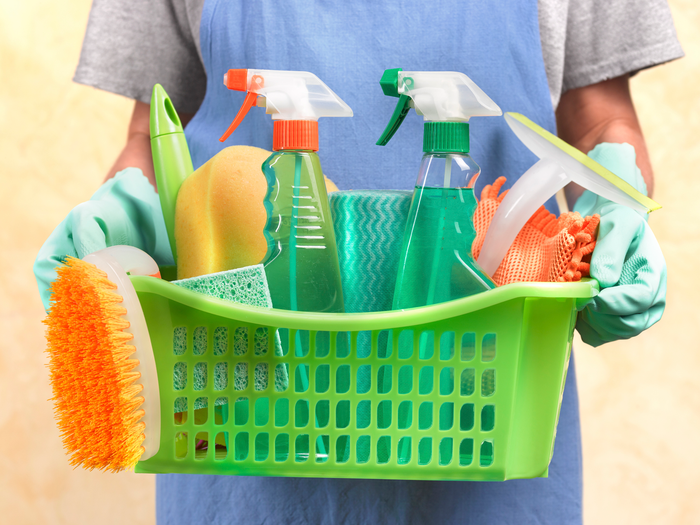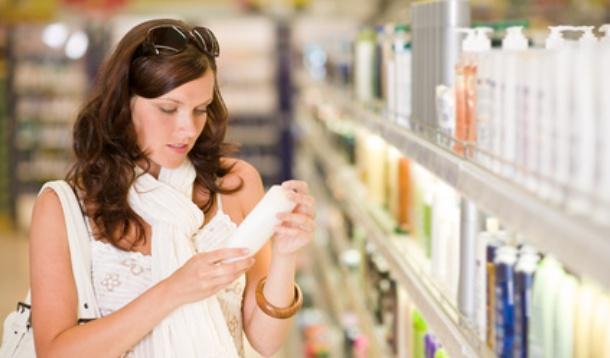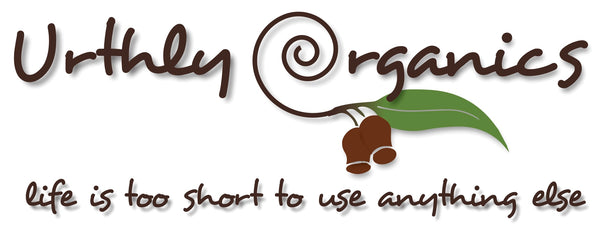
Cleaning up our Act: Things to Consider about Eco Cleaning
Share
Across the world, cleaning products are a part of our everyday lives. But how often do we consider the impacts of our use? With landfills becoming scarce, pollution, and environmental devastation, we forget that what we throw away does not always disappear. Or what we buy does not always fulfill our expectations of being environmentally friendly. This series focuses on our choices doing more harm than good.
Within this edition of Navigating the Compassion Maze, we focus on ‘eco’ cleaning products that cause more harm than good. And we suggest ways to ensure you do not miss out on tidiness while protecting the environment.
De-cluttering the Dilemma
Cleaning products can be a difficult area to navigate. There are mixed messages around what is better to use, what we need, and how we achieve the solutions to cleanliness. With COVID-19 especially, our focus on sanitizing has become more important than ever[1]. However, when thinking about our impacts on the environment, we need to rethink our impacts and be critical as to what we use.
‘Green cleaning’[2] refers to using cleaning methods and products with environmentally friendly ingredients and procedures which are designed to preserve human health and environmental quality. While at a glance, many products we use appear to fall under this category, most do not[3]. Together, in conjunction with a lack of education on how to safely dispose of cleaning products in general, ripples of impact are sent across our waterways and environment.
Impacts of Cleaning Products on the Environment
Natural can be extremely fragile, especially in our waterways. The impact of humans has made this even worse, with many species facing extinction. In Australia, twenty-two species of freshwater fish are at risk of extinction in the next 24 years[4]. Ninety meet the criteria to be classed as ‘threatened’.
Although waterway pollution cannot be considered as the entire issue, human interference definitely is. Our emissions, introduction of species, and continued destruction of the environment have all contributed to a decline. While we cannot all contribute to physically removing introduced species and rebuilding habitats, we can instead focus on ensuring we don’t contribute to the pollution of our planet.
Within many cleaning products are surfactants, endocrine-disrupting chemicals, antibacterial, plasticisers, and BPA[5]. While many products can biodegrade away with minimal impact, others do not. This leads to toxicity, impacts on the reproductive process of aquatic life, and death of important microorganisms[6].
Furthermore, the manufacturing of products can create significant trauma on our flora and fauna. Many household brands still conduct animal testing, causing unnecessary suffering and injury to understand how their product impacts humans[7]. Other factors creating environmental harm include using palm oil which devastates rainforests, pollution waterways from manufacturing, as well as contributions to emissions that reduce air quality.
Cleaning up our act
Based on our current impacts, there is a lot of work to be done. Not just from a practical standpoint either. We need to rethink our approaches to cleanliness beyond the momentary use of the product.
To assist in the process, we at Urthly Organics have put together five ways to reduce the impacts of cleaning products on the environment:
- Wipeout Greenwashing:
![]()
Across the world of skincare and cleaning, mixed messaging has created ambiguity for consumers. Some of the ideas that include ‘natural is best’ or ‘chemicals are bad’ have recreated misinterpretation of someone’s actual impact on the environment[8].
Firstly, all matter is made of chemicals (including you)[9]. Secondly, dangerous chemicals and compounds can be naturally derived, such as arsenic and mercury[10]. Many businesses use this expectation regarding ‘natural’ to leverage products that may harm people, pets, and the environment.
On top of this, labelling of products influences how we interpret the impact of our purchase. Products use nature in their scent names, may claim to use recycled bottles, or package deliberately with the colour green. However, these things again, do not make the cleaning product environmentally ‘clean’[11].
Holding a critical lens to a brand is an important step to putting the planet first. This includes asking questions regarding impact, the safety of use beyond the household, and pointing out messaging that may be considered misleading to the consumer[12]. Following the identification of greenwashed products, we can then buy alternatives while campaigning for change.
- Sorting through the Garbage Ingredients

As part of greenwashing, ingredients can be concealed through re-naming. In addition to re-labelling, swapping out well-known dangerous ingredients with lesser-known dangerous compounds can occur as well, otherwise known as ‘regrettable substitution’[13]. For example, swapping compounds out with the compound bisphenol-A. The ingredient bisphenol A is otherwise known as BPA, a product that can leech into water and microplastics[14].
Our best defense against misleading labels is research. Checking Google for ingredients you do not know is one way to ensure you’re buying according to values. Make sure, however, to look at reputable sources when understanding the ingredients. False claims can also be as harmful as misleading ingredients. Certification and ingredients watchdog organisations, scholarly articles, government agency information, or reputable organisations responsible for environmental protection are often good resources to access before deciding to purchase.
- Consciously Clean

Environmentally conscious and clean products do exist, such as Urthly Organics. While brands like ours aim to reduce the impact as much as possible, we must also rely on consumers. Knowing how to use and dispose of the product properly is a huge factor in ensuring the environmental impact is positive. When using Urthly Organics cleaning products (and all products in many cases), we encourage you to do the following:
- Never use cleaning products directly use in or around lakes, streams, and rivers[15]. All soap is a surfactant, meaning that the product reduces surface tension when added to a liquid[16]. This impacts aquatic bacteria and microorganisms when added to waterways, which can lead to damage in natural water purification processes.
- Look for septic-safe options. Surfactants like soap and other cleaning products may benefit septic system bacteria[17]. Using septic safe cleaning products feeds bacteria and microorganisms without ruining the environment or pH in the tank. The septic system also prevents pollutants from entering our waterways.
- Avoid harsh cleaning compounds altogether. Harsh compounds are meant to remove difficult grease, grime, and germs. Pouring some of these products down the drain is extremely dangerous to the environment[18]. Instead, the products such as oven cleaners should go directly into landfills[19]. Some of these product’s packaging can also not be recycled because of the contents or mixed materials, meaning they also typically go to landfill or additional cleaning.
- Ask about how to safely use and dispose of products. While products like ours can be safely disposed of with ease, it’s about awareness and understanding the different product properties. By asking for information, you can reduce any harm caused by misuse.
- Sweep the Word Across your Community

Awareness of cleaning product safety beyond household use is something we can share with others. Starting the conversation with friends, family, the community, and businesses is an important step towards the prevention of cleaning product pollution. Raising awareness also allows others to make the switch, share the correct messaging, and created shared messaging against greenwashing.
The Impact of Urthly Organics

For us, at Urthly Organics, we believe in transparency, which is why we also want to share our information to prevent greenwashing or misinformation. When it comes to our cleaning products, all but our laundry soap is septic safe and will not damage ecosystems after breaking down properly in water (which simply takes time and dilution). Within the breaking down process, as mentioned above, we do not recommend using the products directly in bodies of water such as streams, lakes, rivers, or dams. Instead, we suggest using water that contains cleaning products to flush the toilet, water the garden, or for other typical greywater uses. Once you’re done with the cleaning product, we can recycle or refill the packaging. That way the environment is not harmed, you recycle water, and you don’t contribute to excess waste.
We also encourage people to always ask questions regarding our impact and how to best ensure no harm is caused by your use of our products. Please do not hesitate to contact us directly.

References
[1] Department of Industry, Science, Energy, and Resources (DISER) (2020), ‘Hand sanitiser in Australia’, DISER, available at: https://www.industry.gov.au/news-media/hand-sanitiser-in-australia
[2] Aguirre, S. (2021), ‘What Is Green Cleaning?’, The Spruce, available at: https://www.thespruce.com/what-is-green-cleaning-1900463
[3] Goddard, S. (2019), ‘Green or Greenwashing? How to Clean Up Cleaning Products Confusion’, Green That Life, available at: https://greenthatlife.com/green-or-greenwashing-guide/
[4] Ketchell, M. (2020), ‘Australia’s Smallest Fish Among 22 at Risk of Extinction within Two Decades’, The Conversation, available at: https://theconversation.com/australias-smallest-fish-among-22-at-risk-of-extinction-within-two-decades-144115
[5] Khan, J. (2018), ‘How Environmentally Friendly are 'Eco' Bath and Cleaning Products?’ ABC News, available at: https://www.abc.net.au/news/science/2018-08-08/how-environmentally-friendly-are-eco-household-products/10017734
[6] Roche, E.J. (2019), ‘The Environmental Impact of Cleaning Products’, PJP Online, available at: https://www.pjponline.com/the-environmental-impact-of-cleaning-products/
[7] Animals Australia, ‘Animal testing: how to spot it — and how to avoid it!’, Animals Australia, available at:
https://www.animalsaustralia.org/features/animal-testing-list.php
[8] Environmental Protection Agency (EPA) (2021), ‘Identifying Greener Cleaning Products’, EPA, available at:
https://www.epa.gov/greenerproducts/identifying-greener-cleaning-products
[9] Science Learning Hub New Zealand (SLNZ)(2016), ‘Chemicals Everywhere’, SLNZ, available at: https://www.sciencelearn.org.nz/resources/363-chemicals-everywhere#:~:text=All%20matter%2C%20including%20us%2C%20is,properties%20and%20reactions%20of%20matter.&text=Everything%20is%20made%20of%20chemicals.,it%20is%20made%20of%20chemicals.
[10] Zielinski, S. (2010), ‘Ten Natural Products That Kill’, Smithsonian Magazine, available at: https://www.smithsonianmag.com/science-nature/ten-natural-products-that-kill-38268113/
[11] Aspen (2019), ‘How to Escape Cleaning Product Greenwashing’, available at: https://www.aspenclean.com/blog/avoid-cleaning-product-greenwashing
[12]Sheiner, V. (2020), ‘Is There a Difference Between Eco-Friendly and Natural Cleaning Products?’, Sheiner’s Cleaning Products, available at: https://sheiners.com/blogs/news/is-there-a-difference-between-eco-friendly-and-natural-cleaning-products\
[13] Non-Toxic Communities (2021), ‘Regrettable Substitution’, Non-Toxic Communities, available at: http://www.nontoxiccommunities.com/regrettable-substitution.html#:~:text=Regrettable%20substitution%20is%20when%20one,as%20harmful%2C%20or%20potentially%20worse.&text=In%20some%20of%20the%20cases,replaced%20with%20another%20toxic%20pesticide.
[14] Synonyms, 2021, ‘bisphenol A’, Synonyms, available at: https://www.synonyms.com/synonym/bisphenol%20a
[15] Martinko, K. (2020), ‘Never, Ever Use Soap in a Lake’, Treehugger, available at: https://www.treehugger.com/never-ever-use-soap-lake-4858470
[16] Britannia (2021), ‘Surfactant’, Britannia, available at: https://www.britannica.com/science/surfactant
[17] Aspen (2018), ‘Septic Safe Products and the Ones to Avoid’, Aspen, available at: https://www.aspenclean.com/blog/septic-safe-products-and-the-ones-to-avoid#:~:text=Septic%20safe%20cleaning,-Natural%20cleaning%20products&text=Products%20that%20are%20safe%20for,tank%20without%20affecting%20the%20bacteria.&text=Use%20septic%2Dsafe%20products%2C%20even,currently%20do%20have%20centralized%20sewage.
[18] MLI Environmental (2019), ‘Negative Effects of Pouring Chemicals Down the Drain’, MLI Environmental, available at: https://mlienvironmental.com/blog/negative-effects-pouring-chemicals-down-drain/
[19] Cleanaway (2020),’ How do I Dispose of Unwanted Chemicals from my Home?’, https://www.cleanaway.com.au/sustainable-future/how-to-dispose-household-chemicals-2/
